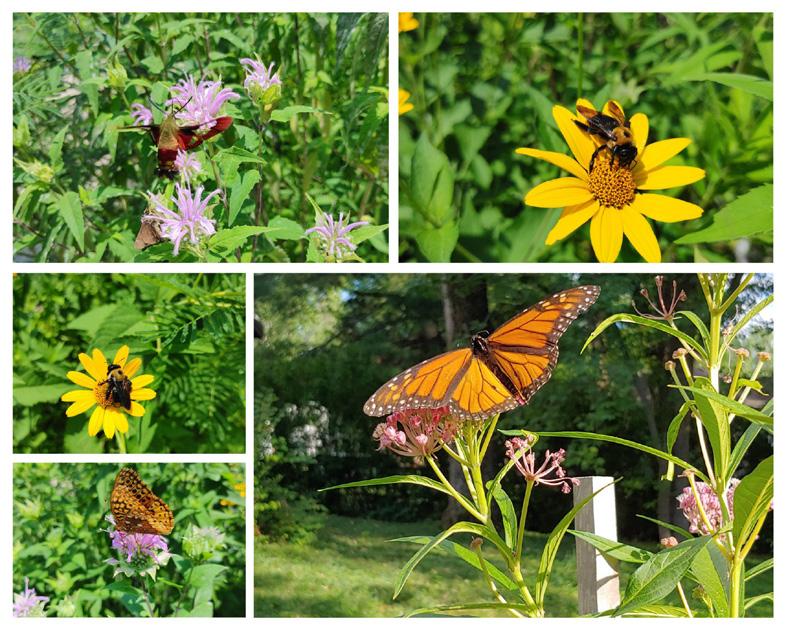
2 minute read
Nature in Your Own Backyard
I’m sure right now, many of us, including me, are thinking about gardening. As spring days lengthen and warm into early summer, it’s the perfect time to start growing something, whether in a vegetable garden or a flower garden. But have you ever thought about gardening for wildlife?
I’ve written about this before, but more and more Missourians are looking for ways to connect with nature in their own backyard, so I thought I would write about it again. Gardening for wildlife is easier than you think, and it can result in a beautiful addition to your property. Not only that, but it is extremely rewarding to see native wildlife come by and use the habitat you grew for them. You can even certify your property as a wildlife habitat through the National Wildlife Federation! Here are a few tips:
The key to a wildlife garden or pollinator patch is to plant native plants. Many pollinator species depend on certain native plants for part of their life cycle. The monarch butterfly, for example, needs milkweed to feed on as a caterpillar. Many more butterflies rely on particular species to reproduce, and planting these host plants can be a great way to see more butterflies while helping keep populations steady. Native wildflowers also provide food and cover for wildlife. These benefits can be enhanced by installing a bird feeder, bird house, or insect house, but there really is no substitute for native plants when it comes to wildlife habitat.
Native landscaping can also be a great way to utilize wet areas that can be difficult to maintain. Buttonbush and rose mallow are larger shrubs with beautiful blooms that thrive in wet areas. Swamp milkweed would also be a good choice for these areas, and its brilliant pink flowers are a great source of nectar for many pollinators.
There are so many varieties of native wildflowers in Missouri, you can undoubtedly find some to fit your space. Whether you want a small, formal looking garden with great curb appeal or you have a little more space to grow some native trees and shrubs, you can find a native plant variety to fit your needs. The Grow Native! program is a great resource for you to help learn which plants will work best on your property. You can find planting guides, vendors, and more at grownative.org
Planting a wildlife garden with native plants won’t just attract pollinators, but you may start to see other wildlife as well. Birds and mammals eat seeds from native plants, and lots of small critters may find shelter within a dense pollinator patch. If you provide a water source, you can ensure that many types of wildlife can find what they need on your property.
For the ambitious gardener, a water garden can add some beautiful habitat and serve as a great water source for many different species. Some aquatic plants produce beautiful flowers that will attract a range of pollinators. Whatever your water source, be sure it has gently sloped edges so any wildlife that might fall in can escape. For deeper water sources, you can lean a rock or log against the edge to create a ramp that can be used by wildlife to climb out.
There are many ways to provide wildlife habitat on your property, even in a small space. However you go about it, be sure to keep an eye out. You’ll be amazed at what you might see. At my house, I get to watch a beautiful array of insects and birds visit my pollinator patch all summer long.
I hope you can find some time to get out and bring a little bit of nature home this summer. However you enjoy the outdoors this year, maybe I’ll see you out there.










